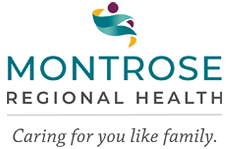As winter closes in and darkness comes earlier, it’s important to slow down and take some extra time to help decrease the opportunity for slips and falls. While the elderly are at particular risk of falling, evidence shows that falls can happen anytime and anywhere, to people of any age. These falls can cause injury and hospital visits, which we would all like to avoid.
As people age, the number of falls and the severity of injury from them increases. According to the CDC, each year one out of three adults 65 and older falls, making falls the leading cause of fatal and non-fatal injuries in that age group. Common injuries from falls include head injuries, shoulder and forearm fractures, spine fractures, pelvic fractures, and hip fractures.
Below are some tips to follow to help reduce the risk of falling during our snowy months;
- Proceed slowly and concentrate on the path ahead
- Avoid slippery surfaces, wet leaves, icy areas and snowbanks when possible
- Wear appropriate footwear
- Hold on to handrails wherever they are provided
- Make sure entrance halls and stairs are clear of snow and slush and clean your shoes off when you go inside. Caked snow and ice on shoes can be very dangerous.
The risk of falling during all seasons can be heightened by many things: poor muscle strength and balance, arthritis, vision or hearing problems, osteoporosis, side effects of medicines and neurologic conditions. Decreased coordination, strength and balance due to inactivity, habits such as excessive alcohol intake and smoking, and the effects of aging can all contribute to decreased bone strength, unsteadiness and slowed reaction times. Most falls do not happen on the ski slope, but at home doing everyday activities.
Many falls can be prevented with healthy lifestyle choices, safety modifications in the home, and vigilance while walking in the snow and ice. Get your eyes examined regularly. Don’t walk around the house in socks. Discuss with your healthcare provider appropriate diet and activities that can help keep bones strong and reflexes sharp. Carefully monitor side effects of all medicines you take, as many can cause dizziness. In your home, make sure areas are well lit and never walk into a dark room. Use nightlights and keep flashlights handy in case of a power outage. Keep clutter off the floor. Be especially careful of cords on the floor from appliances, electronics, phones and any oxygen apparatuses. As stated before, in the winter weather wear appropriate shoes, avoid slippery areas and be very aware of the areas you are walking through.
Your safety is important to us, and we encourage you to look at your home and your surroundings carefully to prevent a fall.
Leann Tobin, Chief Ancillary Services and Marketing Officer, Montrose Regional Health
About Montrose Regional Health (www.MontroseHealth.com)
Montrose Regional Health is a 501(c)3 nonprofit healthcare system serving Montrose, San Miguel, Ouray, Gunnison, Delta, Hinsdale and San Juan counties. The hospital is licensed for 75-beds and offers an extensive range of inpatient & outpatient health care services, including cardiology, oncology, minimally invasive surgery, laboratory, medical imaging/radiology, Mountain View Therapy, Acute Rehabilitation Unit, advanced respiratory & pulmonary services, and the family birthing center. The health system has a reputation for acquiring the latest technologies in healthcare, from robotic assisted surgical services to UVC-disinfection technology. Montrose Regional Health is the second-largest employer in Montrose County, with more than 700 employees and 100 providers who represent 23 medical specialties. With a tagline that reads Caring for you like family, the health system is known for its warm patient care.
